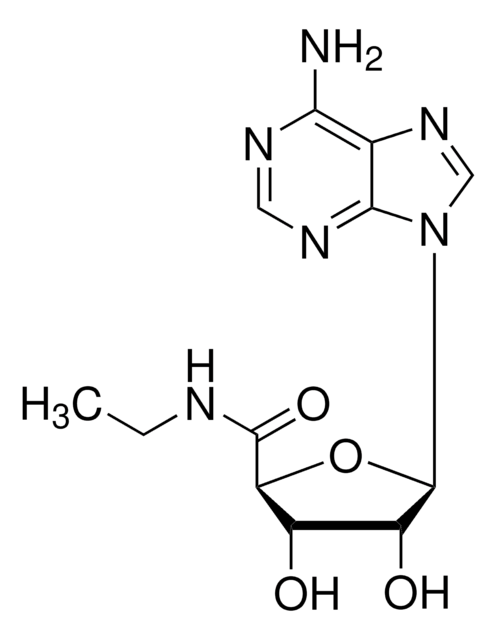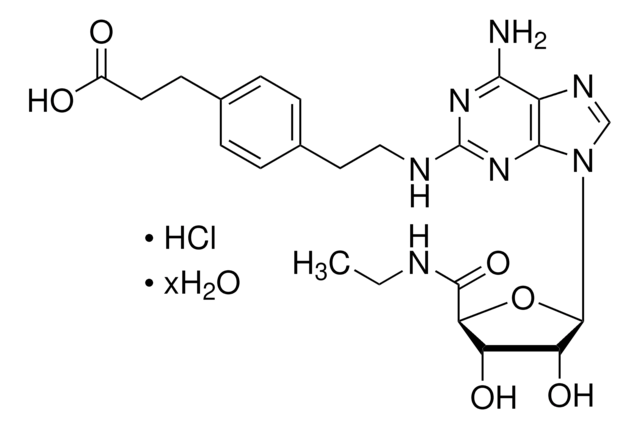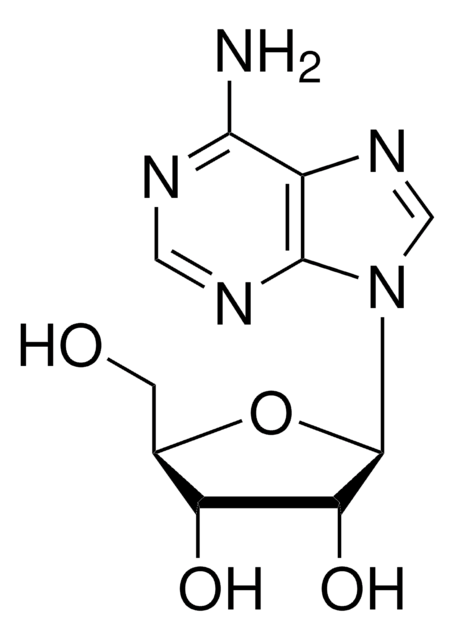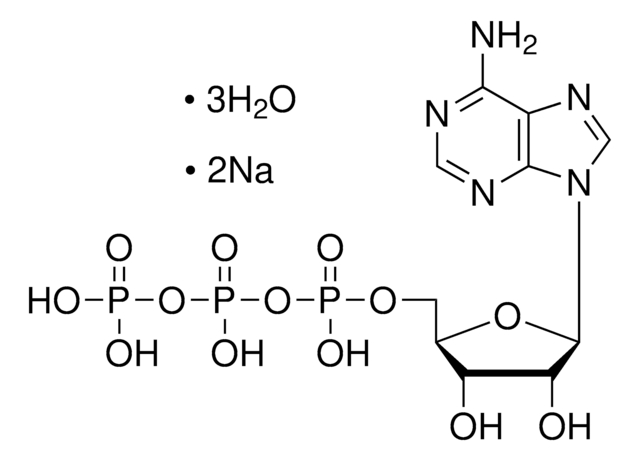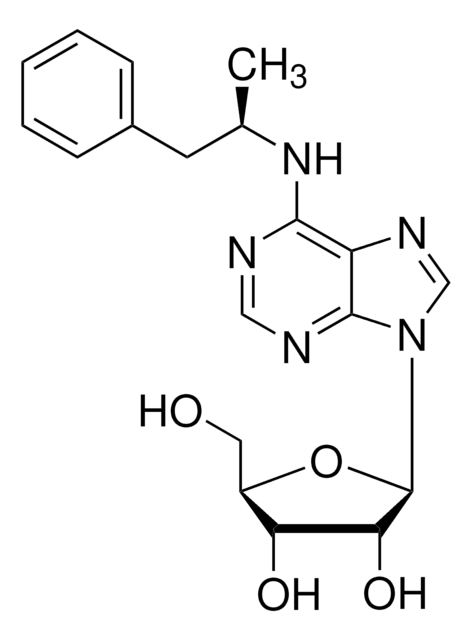Key Documents
E2387
NECA
≥98% (TLC), powder, adenosine receptor agonist
Synonim(y):
NECA
About This Item
Polecane produkty
product name
5′-(N-Ethylcarboxamido)adenosine, powder
Postać
powder
Poziom jakości
kolor
white
rozpuszczalność
45% (w/v) aq 2-hydroxypropyl-β-cyclodextrin: 0.2 mg/mL (Solutions may be stored for several days at 4 °C.)
DMSO: 14 mg/mL (Solutions may be stored for several days at 4 °C.)
0.1 M HCl: 3.4 mg/mL (Solutions may be stored for several days at 4 °C.)
H2O: insoluble
ethanol: soluble (Solutions may be stored for several days at 4 °C.)
temp. przechowywania
2-8°C
ciąg SMILES
CCNC(=O)[C@H]1O[C@H]([C@H](O)[C@@H]1O)n2cnc3c(N)ncnc23
InChI
1S/C12H16N6O4/c1-2-14-11(21)8-6(19)7(20)12(22-8)18-4-17-5-9(13)15-3-16-10(5)18/h3-4,6-8,12,19-20H,2H2,1H3,(H,14,21)(H2,13,15,16)/t6-,7+,8-,12+/m0/s1
Klucz InChI
JADDQZYHOWSFJD-FLNNQWSLSA-N
informacje o genach
human ... ADORA1(134) , ADORA2A(135) , ADORA2B(136) , ADORA3(140)
rat ... Adora1(29290) , Adora2a(25369) , Adora2b(29316) , Adora3(25370)
Szukasz podobnych produktów? Odwiedź Przewodnik dotyczący porównywania produktów
Opis ogólny
Zastosowanie
- for the purification of human adenosine A2Areceptor (A2AR) in decylmaltoside (DM)
- to determine nonspecific binding of adenosine receptors
- to investigate adenosine 2B receptor (RA2B) mechanism of action by competition assay
Działania biochem./fizjol.
Cechy i korzyści
Hasło ostrzegawcze
Danger
Zwroty wskazujące rodzaj zagrożenia
Zwroty wskazujące środki ostrożności
Klasyfikacja zagrożeń
Acute Tox. 2 Oral
Kod klasy składowania
6.1A - Combustible acute toxic Cat. 1 and 2 / very toxic hazardous materials
Klasa zagrożenia wodnego (WGK)
WGK 3
Temperatura zapłonu (°F)
Not applicable
Temperatura zapłonu (°C)
Not applicable
Środki ochrony indywidualnej
Eyeshields, Faceshields, Gloves, type P3 (EN 143) respirator cartridges
Certyfikaty analizy (CoA)
Poszukaj Certyfikaty analizy (CoA), wpisując numer partii/serii produktów. Numery serii i partii można znaleźć na etykiecie produktu po słowach „seria” lub „partia”.
Masz już ten produkt?
Dokumenty związane z niedawno zakupionymi produktami zostały zamieszczone w Bibliotece dokumentów.
Klienci oglądali również te produkty
Nasz zespół naukowców ma doświadczenie we wszystkich obszarach badań, w tym w naukach przyrodniczych, materiałoznawstwie, syntezie chemicznej, chromatografii, analityce i wielu innych dziedzinach.
Skontaktuj się z zespołem ds. pomocy technicznej